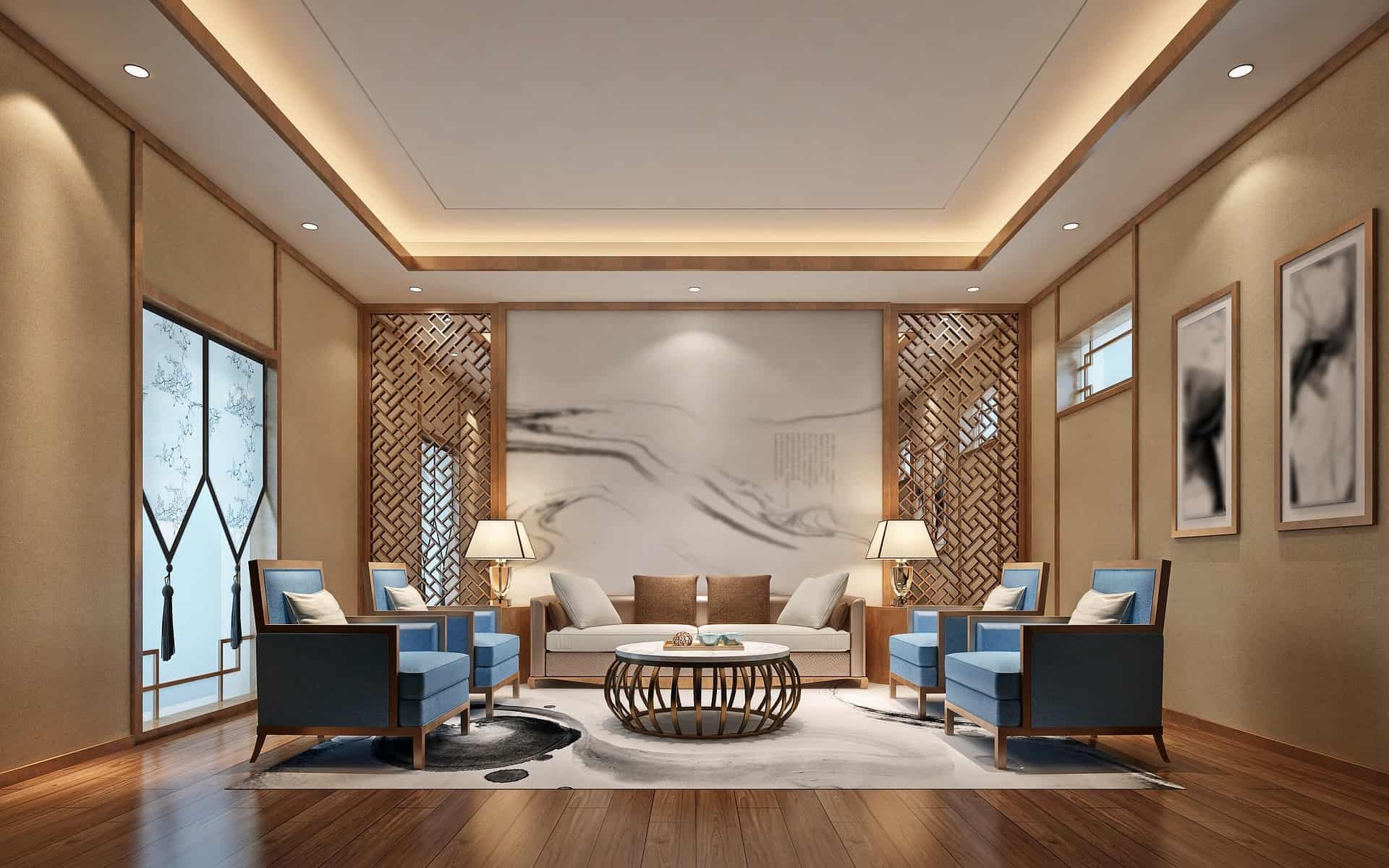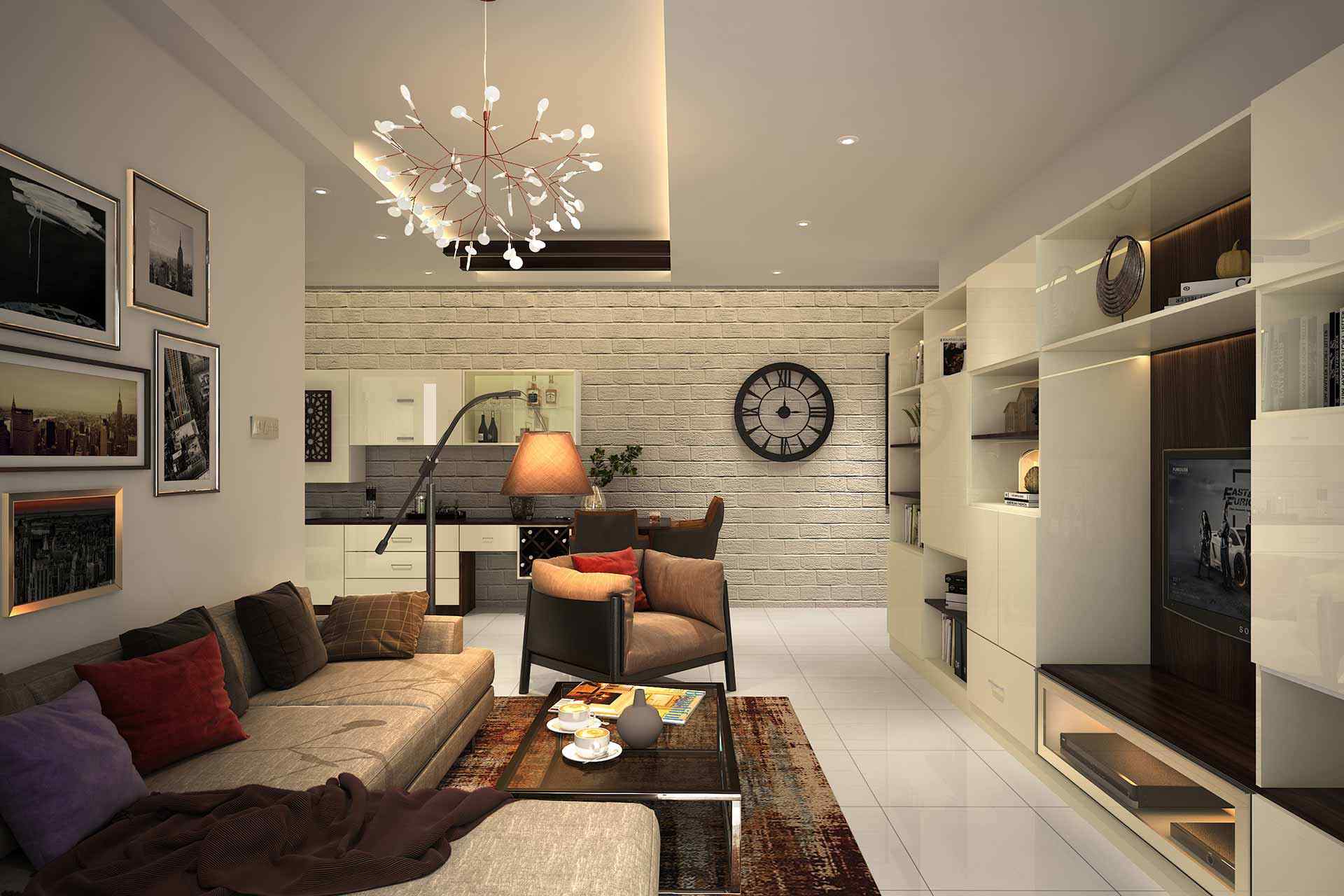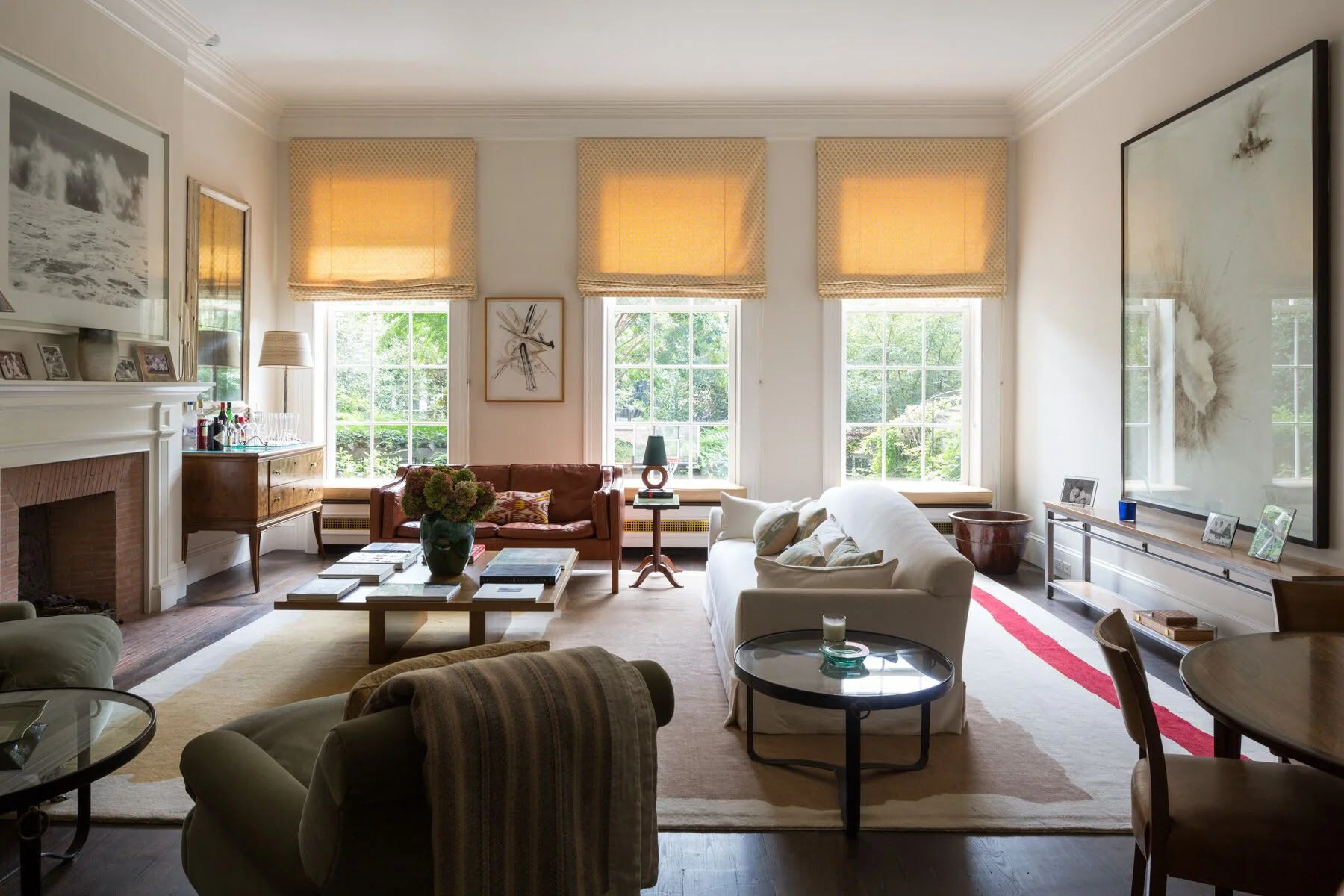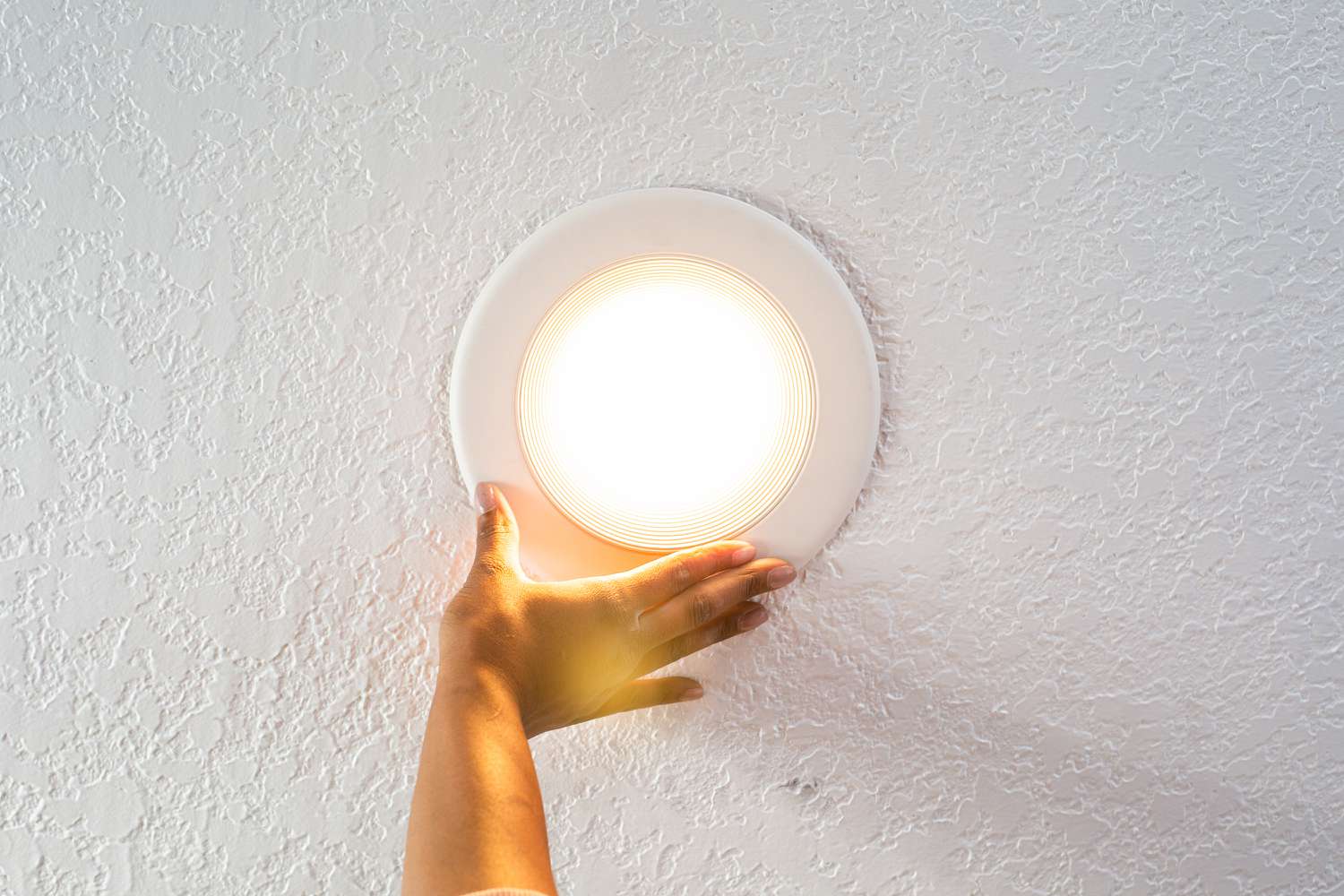

Articles
How Many Recessed Lights For A Living Room
Modified: December 7, 2023
Looking for articles on how many recessed lights to install in your living room? Get expert advice and tips on lighting design for your space.
(Many of the links in this article redirect to a specific reviewed product. Your purchase of these products through affiliate links helps to generate commission for Storables.com, at no extra cost. Learn more)
Introduction
When it comes to lighting up a living room, recessed lights are a popular and versatile choice. They provide a sleek and modern look while offering functional and ambient lighting. However, determining the number of recessed lights needed for a living room can be a bit tricky. It depends on various factors such as the ceiling height, room size, lighting preferences, and task lighting needs.
In this article, we will explore the factors to consider when deciding how many recessed lights to install in a living room. We will also discuss the proper placement of recessed lights and provide recommended guidelines for different living room sizes.
Key Takeaways:
- Properly calculating the total wattage and considering factors like ceiling height and room size helps determine the optimal number of recessed lights for a well-lit living room.
- Strategic placement of recessed lights, based on general, accent, and task lighting needs, enhances the aesthetics and functionality of different living room sizes.
Factors to Consider
Before diving into the calculations, it’s important to consider a few key factors that will help determine the optimal number of recessed lights for your living room:
- Ceiling height: The height of your ceiling will influence how far apart the recessed lights should be placed for optimal lighting coverage. Higher ceilings may require more lights to evenly illuminate the space.
- Room size: The size of your living room will also play a role in determining the number of recessed lights needed. Larger rooms will typically require more lights to adequately light up the space.
- Lighting preferences: Consider the overall lighting goals for your living room. Do you prefer a bright and luminous space, or are you looking for a more subtle and cozy atmosphere? This will influence the intensity and placement of the recessed lights.
- Task lighting needs: Think about specific areas in your living room where you may need additional lighting for tasks such as reading, artwork display, or highlighting an architectural feature. These areas may require extra recessed lights or a different type of lighting fixture.
Calculating the Number of Recessed Lights
Once you have considered the factors mentioned above, you can start calculating the number of recessed lights needed for your living room. Follow these steps:
- Determine total wattage needed: Calculate the total wattage needed to adequately light up your living room. This will depend on factors such as the size of the room, the desired brightness, and any specific lighting requirements.
- Determine the wattage per light: Decide on the wattage rating you want for each recessed light. This will depend on the type of bulbs you plan to use and the level of brightness you desire.
- Divide total wattage by wattage per light: Divide the total wattage needed by the wattage per light to calculate the approximate number of lights required.
- Round up to the nearest whole number: Finally, round up the calculated number of lights to the nearest whole number. It’s better to have slightly more lights than necessary to ensure even and adequate lighting in your living room.
By following these steps, you can obtain an estimate of the number of recessed lights needed for your living room. However, keep in mind that these calculations are a starting point, and you may want to consult with a professional electrician or lighting specialist for personalized recommendations.
Proper Placement of Recessed Lights
Once you have determined the number of recessed lights needed, the next step is to properly place them in your living room. Consider the following guidelines:
Spacing for general lighting: For general lighting, the distance between recessed lights should be approximately half the ceiling height. This evenly distributes the light and avoids any dark spots or shadows.
Accent lighting placement: If you want to highlight specific features or artworks in your living room, position the recessed lights accordingly. Aim the lights at the objects you want to accentuate, such as a fireplace or a piece of art, to create a focal point.
Task lighting placement: For task-specific areas, such as a reading nook or a workspace in your living room, position recessed lights directly overhead or in close proximity. This will provide sufficient illumination for the task at hand.
Recommended Guidelines for Different Living Room Sizes
Key Takeaways:
- Properly calculating the total wattage and considering factors like ceiling height and room size helps determine the optimal number of recessed lights for a well-lit living room.
- Strategic placement of recessed lights, based on general, accent, and task lighting needs, enhances the aesthetics and functionality of different living room sizes.
Factors to Consider
Before deciding on the number of recessed lights for your living room, it is essential to take into account several factors that will help determine the optimal lighting arrangement. Consider the following factors:
- Ceiling height: The height of your ceiling plays a crucial role in determining the placement and spacing of recessed lights. Higher ceilings typically require more lights or wider spacing to ensure adequate illumination throughout the room. Lower ceilings may benefit from tighter spacing for a more concentrated and ambient lighting effect.
- Room size: The size of your living room is an important consideration when determining the number of recessed lights. Larger rooms generally require more lights to evenly distribute light and avoid creating dark areas. Smaller rooms may require fewer lights to achieve the desired illumination without overwhelming the space.
- Lighting preferences: Your personal lighting preferences should be taken into account when deciding on the number of recessed lights. Consider the overall mood and ambiance you want to create in your living room. Do you prefer a bright and well-lit space, or do you prefer a softer and more intimate atmosphere? Understanding your lighting preferences will help in determining the intensity and placement of the lights.
- Task lighting needs: Think about specific tasks or activities that may require additional lighting in your living room. If you have a reading nook, a workspace, or a display area, you might need to incorporate task lighting with recessed lights or secondary lighting sources such as table lamps or floor lamps. Identifying these areas will help in determining the number and placement of lights needed for task lighting purposes.
By considering these factors, you can make more informed decisions about the number of recessed lights required for your living room. Remember, each room is unique, and it is essential to tailor the lighting arrangement to your specific needs and preferences.
Calculating the Number of Recessed Lights
Once you have considered the factors mentioned earlier, you can proceed to calculate the number of recessed lights needed for your living room. Follow these steps:
- Determine total wattage needed: Start by calculating the total wattage required to adequately light up your living room. This depends on factors such as the room size, the desired level of brightness, and any specific lighting requirements. To get an estimate, multiply the square footage of your room by the recommended wattage per square foot. As a general guideline, a well-lit living room may require around 20-30 watts per square foot.
- Determine the wattage per light: Next, decide on the wattage rating you want for each recessed light. This will depend on various factors, including the type of bulbs you plan to use and the level of brightness you desire. Common wattage options for recessed lights range from 40 watts to 100 watts. Consider energy-efficient LED bulbs, as they consume less energy while providing ample brightness.
- Divide total wattage by wattage per light: Divide the total wattage needed for your living room by the wattage per light. This calculation will give you an approximate number of lights required to achieve the desired level of illumination. For example, if the total wattage needed is 1200 watts and you plan to use 60-watt recessed lights, dividing 1200 by 60 will yield 20 lights.
- Round up to the nearest whole number: Finally, round up the calculated number of lights to the nearest whole number. It is often better to have slightly more lights than strictly necessary to ensure even and well-distributed lighting throughout the room. In the example above, rounding up 20 lights may result in a total of 21 recessed lights for your living room.
Keep in mind that these calculations provide a starting point and serve as a general guideline. Factors such as ceiling height, room layout, and personal preference may require adjustments to the number of recessed lights needed. It is recommended to consult with a professional electrician or lighting specialist who can offer personalized advice based on your specific living room requirements and considerations.
By following these steps and considering professional guidance, you can accurately calculate the number of recessed lights needed to create a well-lit and visually appealing living room.
Proper Placement of Recessed Lights
Once you have determined the number of recessed lights needed for your living room, it is important to consider their proper placement. Proper placement ensures that the lights provide optimal illumination and enhance the aesthetics of your space. Here are some guidelines for placing recessed lights:
Spacing for general lighting: For general lighting purposes, aim to space the recessed lights evenly throughout the room. A general rule of thumb is to place the lights approximately half the ceiling height apart. For example, if your ceiling height is 9 feet, you should space the recessed lights 4.5 feet apart. This spacing helps to distribute the light evenly and prevent any dark or shadowy spots.
Accent lighting placement: Recessed lights can also be used to highlight specific features or areas in your living room. For accent lighting purposes, position the lights strategically to draw attention to architectural details, artwork, or decorative elements. Aim the lights directly at the objects you want to highlight, such as a beautiful painting or an elegant piece of furniture. Experiment with different angles to achieve the desired effect and create a focal point within the space.
Task lighting placement: In addition to general and accent lighting, recessed lights can also serve as task lighting in specific areas of your living room. Task lighting is focused lighting that helps you perform specific activities or tasks, such as reading, crafting, or working on a computer. To provide adequate task lighting, position recessed lights directly above or near the task area. For example, if you have a reading nook, install recessed lights above or on either side of the seating area to ensure sufficient illumination for reading comfortably.
Remember that the proper placement of recessed lights is subjective and depends on your specific living room layout, furniture arrangement, and lighting goals. Experimenting with different placements and seeking professional advice can help you achieve the desired lighting effects in your living room.
By following these guidelines, you can effectively place recessed lights in your living room to create a well-lit and visually appealing space. Whether it’s for general lighting, accent lighting, or task lighting, proper placement can significantly enhance the overall ambiance and functionality of your living room.
Recommended Guidelines for Different Living Room Sizes
When it comes to lighting a living room, the size of the space plays a crucial role in determining the number and placement of recessed lights. Consider the following guidelines based on different living room sizes:
Small living rooms: For smaller living rooms, it is important to strike a balance between providing adequate illumination and avoiding overwhelming the space. A general recommendation is to install around 4 to 6 recessed lights in a small living room. Place them strategically to evenly light up the area, keeping in mind the spacing guidelines mentioned earlier. Additionally, consider using dimmer switches to control the intensity of the lights and create a cozy and intimate atmosphere when desired.
Medium living rooms: Medium-sized living rooms offer more flexibility in terms of lighting options. To ensure proper illumination, consider installing approximately 8 to 12 recessed lights in a medium-sized living room. This will provide sufficient brightness and allow for even distribution of light throughout the space. Experiment with different configurations and placements to achieve a balanced and well-lit environment. Consider zoning the room into different areas, such as seating areas, entertainment areas, and dining areas, and adjust the number of lights accordingly.
Large living rooms: Large living rooms offer ample space to get creative with your lighting design. To effectively light up a large living room, plan to install around 12 to 20 recessed lights or even more, depending on the ceiling height and layout. Distribute the lights evenly across the room to avoid any dark areas. Additionally, consider incorporating different lighting layers, such as general lighting, accent lighting, and task lighting, to add depth and visual interest to the space. For larger living rooms, it is recommended to consult with a lighting professional who can provide personalized advice based on the dimensions and layout of your specific space.
Remember, these guidelines are not set in stone, and personal preferences and specific room characteristics may warrant adjustments. Always consider the unique aspects of your living room and seek professional guidance when needed to ensure optimal lighting results.
By following these recommended guidelines, you can effectively determine the number of recessed lights needed for different living room sizes. Achieving the right balance of lighting in your living room will enhance the aesthetics, functionality, and overall atmosphere of the space.
Read more: How Many Watt Light Bulb For Living Room
Conclusion
Choosing the right number of recessed lights for your living room is crucial for creating a well-lit and inviting space. By considering factors such as ceiling height, room size, lighting preferences, and task lighting needs, you can make informed decisions about the placement and number of recessed lights needed. Properly calculating the total wattage required and dividing it by the wattage per light can give you an estimate of the number of lights needed, which can then be adjusted based on personal preferences and professional advice.
When it comes to placement, spacing the recessed lights for general lighting evenly throughout the room ensures that there are no dark spots or shadows. Accent lighting can be used to highlight specific features or artworks, while task lighting should be placed directly above or near areas where specific activities are performed.
The recommended guidelines for different living room sizes provide a starting point for determining the number of recessed lights needed. Small living rooms typically require around 4 to 6 lights, medium-sized ones may benefit from 8 to 12 lights, and larger living rooms may need around 12 to 20 or more lights for optimal illumination.
It’s important to keep in mind that these guidelines are not rigid rules and can be adjusted based on individual preferences, room layout, and the guidance of a professional electrician or lighting specialist. Their expertise can help you fine-tune your lighting design and ensure that it complements your living room’s unique characteristics.
Ultimately, the goal is to create a beautiful, functional, and comfortable living room that meets your lighting needs and enhances the overall ambiance. With careful consideration of the factors discussed and a thoughtful design approach, you can achieve just that with recessed lights.
Frequently Asked Questions about How Many Recessed Lights For A Living Room
Was this page helpful?
At Storables.com, we guarantee accurate and reliable information. Our content, validated by Expert Board Contributors, is crafted following stringent Editorial Policies. We're committed to providing you with well-researched, expert-backed insights for all your informational needs.














0 thoughts on “How Many Recessed Lights For A Living Room”